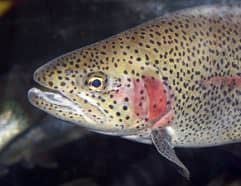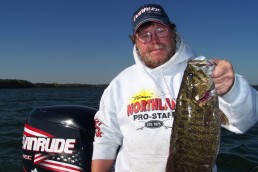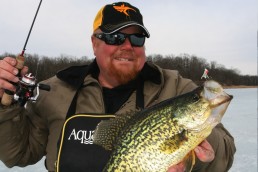No Guts, No Glory: Prepare to Catch more Fish
SHARE THIS POST
Great fishing starts miles from your water’s edge if you expect success. Certainty of a good time fishing—even on the most miserable of days for fish activity, comes through great preparation. Bottom line, or bottom of the line, might just be the most important task in getting ready to catch.
Good fishing starts on the workbench. Rare is the day when nothing is ready at the water’s edge, you tie up everything on the spot and catch fish.
Right now, most places don’t offer great leader line, with “the perfect hook.” There is no brand of line and hook that offers you the choices you need for most situations. The best lines are those that you would use for waters you know and don’t know. Conditions can dictate a thinner, stealthier line or a beefier, stronger line if brute fish are in your area. What you need to get you through most fishing and changing conditions is a hook wallet. Thin lines catch more and larger fish in slow, cold conditions like our March Midwest waters present. Being prepared for the worst is key. Your wallet will improve your fishing. By wallet, I am not talking about that thick thing you sit on that throws out your back, but a hook wallet.

The most simple of hook wallets can be a pizza cardboard long rectangle with slits cut on one short end. The slits hold your leaders. More deluxe hook wallets have an outside case, foam to stick your hooks and loops to hold the end of your snell. My hook wallet will carry at least 14 hooks and leaders for the day for each situation I am fishing. If I am hunting perch and walleye, I would have matched my main line on my walleye rod to a slightly thinner leader line. Example—6-pound main line would mean I am prepping 4-pound leader line in two hook sizes with two line choices. First line is a thin mono in 4-pound range and the second would be a 4- or 5-pound fluorocarbon line for stealth and power.
Are you enjoying this post?
You can be among the first to get the latest info on where to go, what to use and how to use it!
For stocked trout fishing, I might be preparing a 2-poundflourocarbon line and a 4-pound “fluoro” line—note, the trout’s vision dictates that I am almost always fishing flouro leader line—a 12-inch section of stealthy line to tiny hook. With these two line choices, I can fish most waters. The 4-pound flouro is necessary if there are bigger trout in the area or if there is a weed line. Diving trout tangle up in the weed line and would force me to the tougher line. Otherwise, I am outfitting all around me with a fine 2-pound fluorocarbon line and a size 14, fine wire hook. There are times when that leader makes all the difference.
For old-timers and fishing historians, gut line was available along with silk braid and cotton braid lines. These lines made a difference even back in the 1700s. Using the stealth of modern mono and flouro lines also makes a big difference.
When I go trout fishing with a float and live bait–my neighbors almost always think my spot has all the fish. Untrue. The same fish are in their spot. I prove this out at times by giving my “nicer” neighbors my leaders and hooks on their gear—and they instantly catch fish. The fish are there also. They see thick, bad leaders and they peel away. Now, my rude neighbors, I tend to just net their fish and I don’t offer help.
While fish aren’t smart enough to know a thick leader is danger, they have learned enough to know that food doesn’t have a visible line connected to it.
MWO
SHARE THIS POST
Did you enjoy this post?
You can be among the first to get the latest info on where to go, what to use and how to use it!
Johnny Wilkins
MidWest Outdoors works with more than 200 outdoor experts each year, who contribute articles based on their areas of expertise. MidWest Outdoors magazine offers more fishing and hunting articles than any other publication!



